Here are a few articles that can help with the basic understanding on how accomodating resistance helps powerlifters and athletes, with a few pics so you get the idea on how to set them up.
http://www.testosterone.net/html/body_127resist.html
http://www.deepsquatter.com/strength/archives/ls01.htm
http://www.deepsquatter.com/strength/archives/ls6.htm
http://www.deepsquatter.com/strength/archives/ls15.htm
I have been thinking for the past few weeks about how a bodybuilder and a powerlifter could possibly cross-train. Although not fully possible for most people, it is possible to pick up a few fine points from both perspectives. I have always believed in hard, heavy, and compound movements for size and strength. Untill recently, I have been only training for size and strength. The past several months I have been training for function.
One of the major aspects of training for function is the different types of special strengths that an athlete needs. Maximal strength, strength endurance, speed strength, explosive strength, and accelerating strength are the major special strengths. The best programs for strength and function will cover all of these aspects in my opinion.
As I set out on my journey to become a better athlete I was set up with a training program based upon the Westside Barbell methods. After weeks of questioning of the system, I began to see results. Months later, I am still seeing results. Recently I have really pushed the envelope of accomodating resistance on my squats. I am working to increase my explosiveness to a much greater level on all of my lower body activities.
Something then hits me. When I was a bodybuilder, many moons ago, I would always take my reps super slow because I believed that the negative portion of the lift was the part that made me grow. I even added some negatives to my routine from time to time. I began to think back on all of the things that I used to do as a bodybuilder: drop sets, negatives, forced reps, forced negatives, heavy weight on the negative and my partner would take weights off for the positive, etc...
WSB advocates the use of bands and chains to help with accomodating resistance. Ever notice that you can quarter squat 500, parallel squat 400, and full squat 300? If you like to do full squats (like myself) and you can only handle 300 at the bottom, then the top portion of your squat isn't really working anything. If you were to add 200lbs of band tension to that full squat...you would have 300 at the bottom and 500lbs at the top...making the squat a more productive exercise for the entire body.
Ever wonder why your back seems to be too weak to do squats or deads? Is it being properly strengthened? That one time that you go for a new personal record on the squat (parallel) and you really push yourself with 400lbs...and your back is only used to handling 300lbs on the top portion...you end up with an injury. Your body was not used to using the 400lbs because you could only do a full squat with 300lbs.
People do partial deads out of the rack to help with their deadlift. The main reason is that they feel that they can pull more weight which will give more muscle mass in the upper back area, traps, and just all over. Why not pull from the floor? Many people will not pull off the floor because their back can not handle the same amount of weight straight off the floor. It would be nice to only have to pull 300 from the floor yet be holding 500 at the top. Kills two birds with one stone.
Flat bench press: the weight increases as the exercise gets easier.
Overhead press: same thing...maybe you could possibly do behind the neck presses again for the first time in years because you might only be pressing the 45lb bar off of your shoulders...yet be able to have 200lbs on the bar at the top.
Standing Bar Curls: decided to go to cables and concentration curls to allow for a full contraction? Add the bands to the bar for constant tension.
Think about this...everytime you lower the bar...the bands are pulling you down. When you squat with bands...the bands pull you down to the floor just as a partner assisted forced negative would. With the bands, you can choose how much the negative will be though and not have to rely on a partner. The negative resistance lessens up as your joints (knees, elbows, shoulders, etc...) become in a more vaulnerable position too.
Pure explosiveness. Developing explosiveness will not only make your lifts stronger...it will make you a better athlete no matter what your venue is. When I do box squats and have over 300lbs of tension on the bar...the bands will either pin me to the box or I will be explosive enough to come back up from a dead stop. This explosiveness is the same as what I do when I shoot my hips to filp a 1,000 lb tire, full squat, from a 3 point stance on the football line, etc...
Think about explosiveness like this. Remember the last time you were doing a bench press, close grip, overhead press, squat, deadlift, etc...and got to your sticking point and got stuck? If you were more explosive through the positive of that lift...you would have blown straight through your sticking point.
The use of chains is not something that I can fully comment on at the moment because I have not used them to their fullest extent. They still provide the explosive positive training but not the negative resistance. The chains load and deload through every rep hence you lift more weight as your leverages become more efficient.
It is also good to note that they are very therapeutic, good for stretching, and can be used while on the road. They can easily be packed away in your suitcase and taken into any gym or simply used in a motel room. I also use them to help me stretch and warm up before a contest.
Here are some links to my training with bands...
http://boards.elitefitness.com/forum/showthread.php?threadid=135625
http://boards.elitefitness.com/forum/showthread.php?threadid=133506
B True
http://www.testosterone.net/html/body_127resist.html
http://www.deepsquatter.com/strength/archives/ls01.htm
http://www.deepsquatter.com/strength/archives/ls6.htm
http://www.deepsquatter.com/strength/archives/ls15.htm
I have been thinking for the past few weeks about how a bodybuilder and a powerlifter could possibly cross-train. Although not fully possible for most people, it is possible to pick up a few fine points from both perspectives. I have always believed in hard, heavy, and compound movements for size and strength. Untill recently, I have been only training for size and strength. The past several months I have been training for function.
One of the major aspects of training for function is the different types of special strengths that an athlete needs. Maximal strength, strength endurance, speed strength, explosive strength, and accelerating strength are the major special strengths. The best programs for strength and function will cover all of these aspects in my opinion.
As I set out on my journey to become a better athlete I was set up with a training program based upon the Westside Barbell methods. After weeks of questioning of the system, I began to see results. Months later, I am still seeing results. Recently I have really pushed the envelope of accomodating resistance on my squats. I am working to increase my explosiveness to a much greater level on all of my lower body activities.
Something then hits me. When I was a bodybuilder, many moons ago, I would always take my reps super slow because I believed that the negative portion of the lift was the part that made me grow. I even added some negatives to my routine from time to time. I began to think back on all of the things that I used to do as a bodybuilder: drop sets, negatives, forced reps, forced negatives, heavy weight on the negative and my partner would take weights off for the positive, etc...
WSB advocates the use of bands and chains to help with accomodating resistance. Ever notice that you can quarter squat 500, parallel squat 400, and full squat 300? If you like to do full squats (like myself) and you can only handle 300 at the bottom, then the top portion of your squat isn't really working anything. If you were to add 200lbs of band tension to that full squat...you would have 300 at the bottom and 500lbs at the top...making the squat a more productive exercise for the entire body.
Ever wonder why your back seems to be too weak to do squats or deads? Is it being properly strengthened? That one time that you go for a new personal record on the squat (parallel) and you really push yourself with 400lbs...and your back is only used to handling 300lbs on the top portion...you end up with an injury. Your body was not used to using the 400lbs because you could only do a full squat with 300lbs.
People do partial deads out of the rack to help with their deadlift. The main reason is that they feel that they can pull more weight which will give more muscle mass in the upper back area, traps, and just all over. Why not pull from the floor? Many people will not pull off the floor because their back can not handle the same amount of weight straight off the floor. It would be nice to only have to pull 300 from the floor yet be holding 500 at the top. Kills two birds with one stone.
Flat bench press: the weight increases as the exercise gets easier.
Overhead press: same thing...maybe you could possibly do behind the neck presses again for the first time in years because you might only be pressing the 45lb bar off of your shoulders...yet be able to have 200lbs on the bar at the top.
Standing Bar Curls: decided to go to cables and concentration curls to allow for a full contraction? Add the bands to the bar for constant tension.
Think about this...everytime you lower the bar...the bands are pulling you down. When you squat with bands...the bands pull you down to the floor just as a partner assisted forced negative would. With the bands, you can choose how much the negative will be though and not have to rely on a partner. The negative resistance lessens up as your joints (knees, elbows, shoulders, etc...) become in a more vaulnerable position too.
Pure explosiveness. Developing explosiveness will not only make your lifts stronger...it will make you a better athlete no matter what your venue is. When I do box squats and have over 300lbs of tension on the bar...the bands will either pin me to the box or I will be explosive enough to come back up from a dead stop. This explosiveness is the same as what I do when I shoot my hips to filp a 1,000 lb tire, full squat, from a 3 point stance on the football line, etc...
Think about explosiveness like this. Remember the last time you were doing a bench press, close grip, overhead press, squat, deadlift, etc...and got to your sticking point and got stuck? If you were more explosive through the positive of that lift...you would have blown straight through your sticking point.
The use of chains is not something that I can fully comment on at the moment because I have not used them to their fullest extent. They still provide the explosive positive training but not the negative resistance. The chains load and deload through every rep hence you lift more weight as your leverages become more efficient.
It is also good to note that they are very therapeutic, good for stretching, and can be used while on the road. They can easily be packed away in your suitcase and taken into any gym or simply used in a motel room. I also use them to help me stretch and warm up before a contest.
Here are some links to my training with bands...
http://boards.elitefitness.com/forum/showthread.php?threadid=135625
http://boards.elitefitness.com/forum/showthread.php?threadid=133506
B True
Last edited:


 Please Scroll Down to See Forums Below
Please Scroll Down to See Forums Below 












